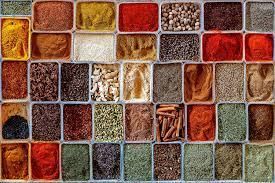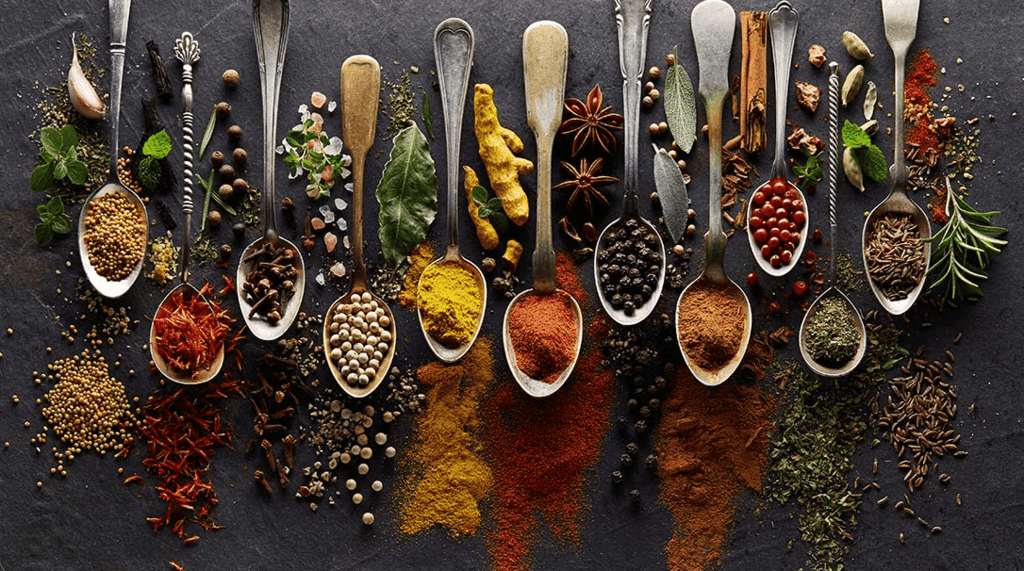Detailed Summary: Spices that Heal Us | Chapter Notes For Class 6 PDF Download
| Table of contents |

|
| Key Points of the Chapter |

|
| Detailed Summary |

|
| Theme/ Message |

|
| Difficult Words |

|
Key Points of the Chapter
- The chapter is written as a letter from a grandmother to her grandchildren, Vikram and Vaibhavi.
- The grandmother shares personal stories about learning these remedies from her grandmother.
- Common kitchen spices such as turmeric, fenugreek, cumin, ginger, etc. are highlighted.
- The chapter encourages the grandchildren to remember these remedies and share them with others.
- The tone is warm and caring, showing love and teaching important lessons.
- The use of simple language makes it accessible for young readers.

Detailed Summary
The letter begins with Daadi learning from her grandchildren’s message that they are feeling better. She is happy that the natural remedies she suggested helped improve their health.
Daadi’s message to Vikram and Vaibhavi is filled with warmth and care. She remembers her own childhood when she learned these remedies from her grandmother, passing down this valuable knowledge through generations.
The first spice Daadi talks about is haldi (turmeric). She explains that turmeric boosts energy, helps with digestion, and relieves body pain. This golden spice, found in most Indian kitchens, has many health benefits.
Next, Daadi shares the benefits of methi (fenugreek), which helped her maintain her sugar levels and body weight. She drinks methi water in the morning after soaking the seeds overnight to stay healthy.

Daadi also talks about jeera (cumin) seeds, which improve digestion and help with sleeplessness when soaked overnight in water. She recalls using heeng (asafoetida) water to cure her grandchildren’s stomach problems when they were babies. She also mentions its use in treating coughs and colds.
For toothaches, Daadi suggests dalchini (cinnamon) and laung (clove) as a natural way to ease pain. She also praises ginger, which has been used for over 4,000 years for cooking and medicine, especially for coughs, colds, and pain relief.
Daadi’s knowledge extends to kali mirch (black pepper), saunf (fennel seeds), ajwain (carom seeds), and elaichi (cardamom). These spices aid digestion and have other healing properties. Kali mirch also helps with pain relief, while elaichi can help with breathing problems. She encourages Vikram and Vaibhavi to explore these kitchen treasures but reminds them to always seek guidance from elders before using them.
In her closing words, Daadi sends her love and blessings to Vikram and Vaibhavi. Her letter is not just about herbal remedies but also about the strong bond between generations, where wisdom and care are passed down as precious gifts.
Theme/ Message
From adding flavour in our food to curing us from various illnesses, spices hold a huge importance in our lives because of the various benefits they provide.
Theme
The chapter is about the special bond between grandparents and grandchildren and how wisdom is passed down through generations. It highlights the importance of natural remedies and traditional knowledge in keeping us healthy. The story also shows how simple kitchen spices can be powerful in curing common health problems.
Message
We can learn a lot from our elders because they have many years of experience and knowledge. Natural remedies using everyday spices can help us stay healthy, but we should always ask elders before using them. The chapter also teaches us to respect and cherish the wisdom passed down from one generation to the next.Difficult Words
- Asafoetida: A strong-smelling resin used in cooking and medicine.
- Remedy: A treatment for illness or problems.
- Cure: A method or medicine that heals.
- Fenugreek: A pea-family plant with medicinal seeds.
- Cumin: An aromatic spice from the parsley family.
- Saunf: Fennel seeds used in cooking and medicine.
- Ajwain: Carom seeds, a spice with medicinal uses.
- Dalchini: Cinnamon, a fragrant tree bark spice.
- Kali Mirch: Black pepper, a pungent dried berry spice.
- Elaichi: Cardamom, an aromatic medicinal spice.
- Adrak: Ginger, a pungent root used in medicine and cooking.
- Natural: Existing in nature, not man-made.
- Remedies: Treatments for illness or problems.
- Wisdom: Good judgment from knowledge and experience.
- Extensively: Covering a large area or range.
FAQs on Detailed Summary: Spices that Heal Us - Chapter Notes For Class 6
| 1. What are some common spices that have healing properties? |  |
| 2. How does turmeric help in healing? |  |
| 3. Can spices be used in everyday cooking for health benefits? |  |
| 4. Are there any side effects of consuming too many spices? |  |
| 5. How can I include more spices in my diet for better health? |  |















